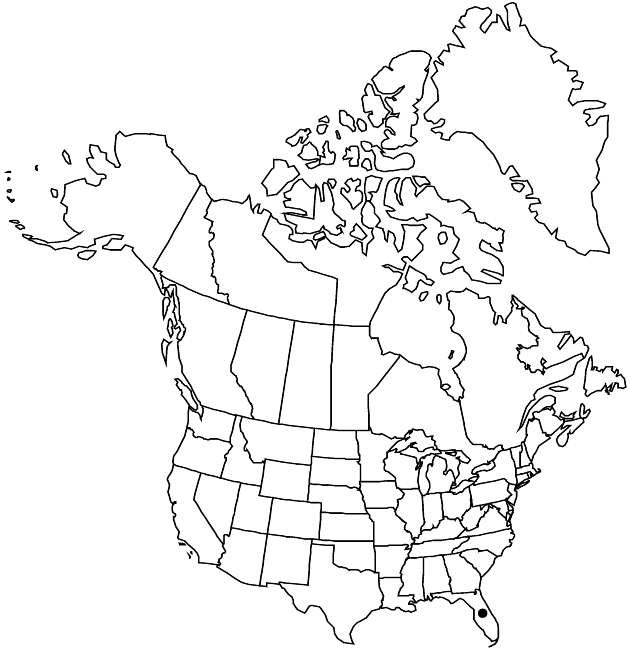Difference between revisions of "Melampodium divaricatum"
in A. P. de Candolle and A. L. P. P. de Candolle, Prodr. 5: 520. 1836.
Basionym: Dysodium divaricatum Richard
FNA>Volume Importer |
FNA>Volume Importer |
||
| Line 50: | Line 50: | ||
|publication year=1836 | |publication year=1836 | ||
|special status= | |special status= | ||
| − | |source xml=https://jpend@bitbucket.org/aafc-mbb/fna-data-curation.git/src/ | + | |source xml=https://jpend@bitbucket.org/aafc-mbb/fna-data-curation.git/src/8f726806613d60c220dc4493de13607dd3150896/coarse_grained_fna_xml/V19-20-21/V21_65.xml |
|tribe=Asteraceae tribe Heliantheae | |tribe=Asteraceae tribe Heliantheae | ||
|subtribe=Asteraceae (tribe Heliantheae) subtribe Melampodiinae | |subtribe=Asteraceae (tribe Heliantheae) subtribe Melampodiinae | ||
Revision as of 15:36, 18 September 2019
Annuals, 15–100+ cm. Leaf blades ± rhombic to lanceolate, 40–150+ × 25–95+ mm, lengths 1–2(–3+) times widths, margins coarsely toothed or entire. Peduncles 1–12+ cm. Outer phyllaries 5, connate 1/4–1/3 their lengths, ovate to orbiculate, 3.5–6 mm. Ray florets 8–13; corollas yellow-orange, laminae oblong-elliptic, 3.5–7+ × 1.6–3+ mm. Disc florets 40–70+. Fruits 2.8–4+ mm. 2n = 24.
Phenology: Flowering year round.
Habitat: Disturbed sites
Elevation: 0–10+ m
Distribution

Fla., Mexico, West Indies (Antilles), Central America, South America, introduced in Old World.
Discussion
Selected References
None.
Lower Taxa
None.